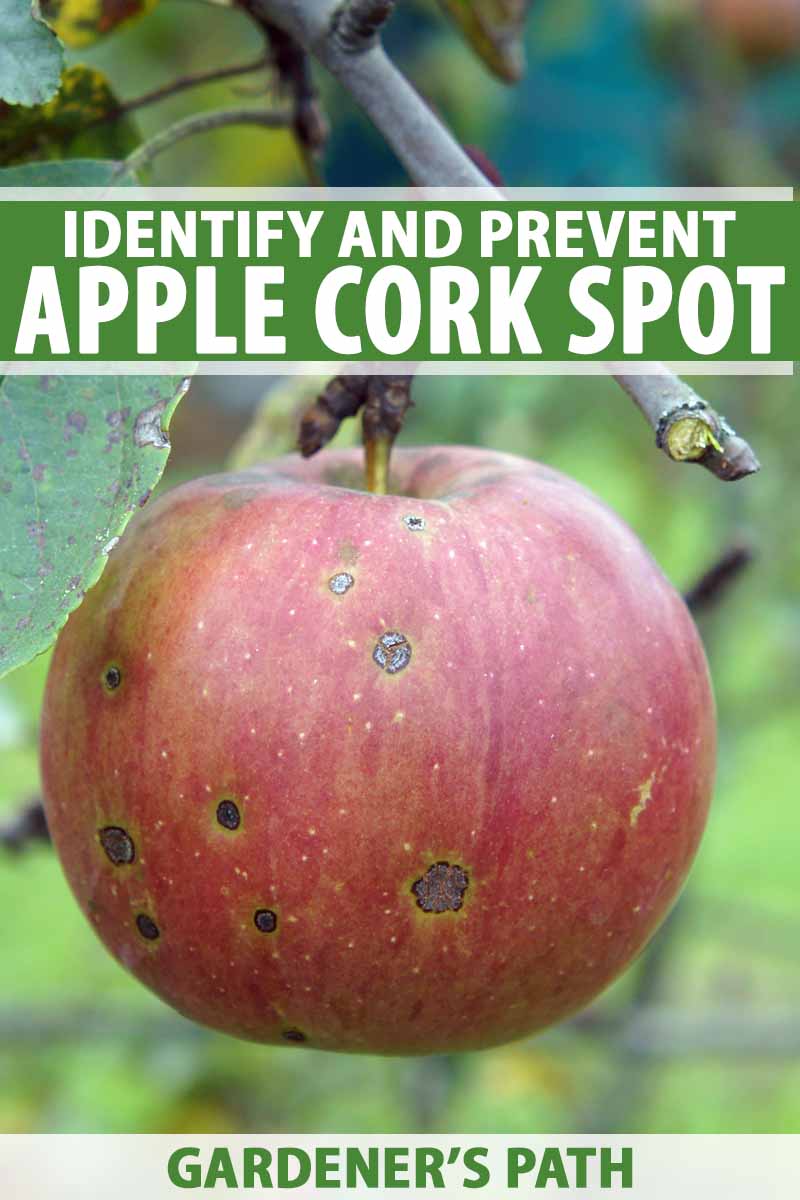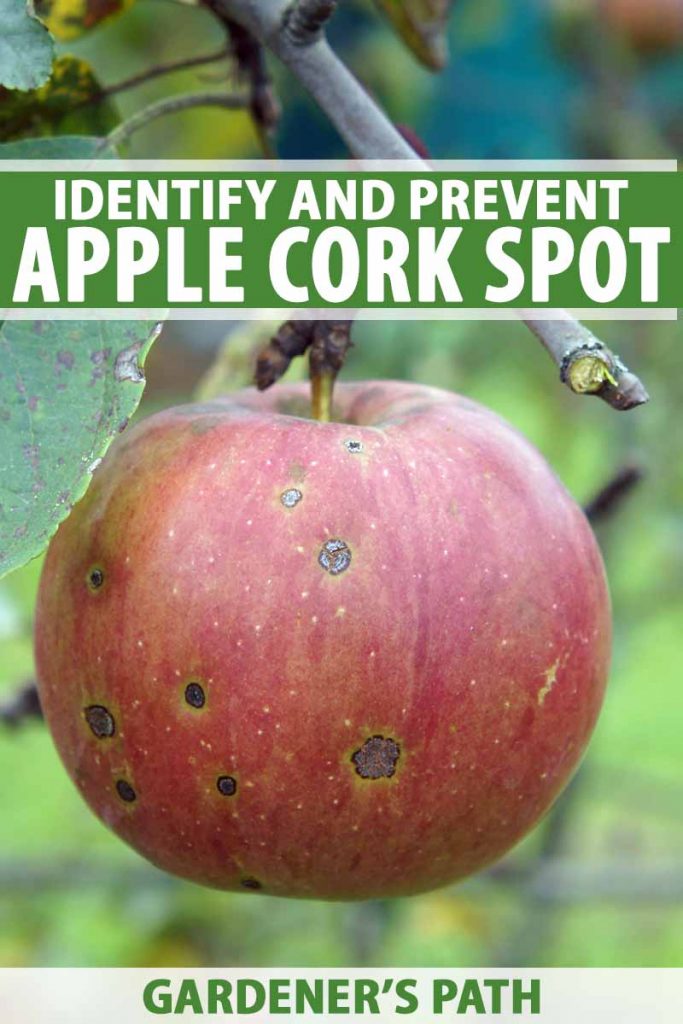[ad_1]
If you see spots on your apples, you may be tempted to think “Oh no! Fungal or hail injury.” However, there may be another cause, especially if your apple trees are York Imperial, Golden Delicious, or Delicious cultivars.
It could be an easily curable physiological condition known as cork spot.


We link to vendors to help you find relevant products. If you buy from one of our links, we may earn a commission.
Read on to find out what symptoms to look for and what you do to prevent this hideous but superficial disorder.
What is Apple Cork Rot?
Cork spot is a disorder of the tree’s physiology and has nothing to do with a disease. The condition causes the fruit to have an unappealing outside appearance and a corky texture on the interior. It typically occurs in fruit that are low in calcium. In some cases it may also be due to an imbalance among potassium, magnesium, and calcium.
While the fruit are technically edible, they will be difficult to sell, they they may have a bitter flavor. If you run a small commercial orchard, your customers may fear that your apples are contaminated with mold.
Symptoms
The first sign that something is amiss will be little green dimples or depressions on the outer portion of the fruit’s flesh. This process typically starts in the early summer and can continue as the fruit grows and enlarges.
Eventually, the little spots grow and become corky and discolored. The spots may be as much one half inch across.
Why does this happen, you might ask? There are several reasons why the fruit may become low in calcium. The obvious one is a shortage of calcium in the tree. This is typically due to low pH in the soil.
However, other factors can contribute to the development of cork rot. One is when the shoots on the tree grow too vigorously and draw the tree’s calcium away from the fruit. Light crops can also produce this effect.
How to Control Apple Cork Rot
While there isn’t much you can do for your poor fruit at the moment, there are steps you can take to stop this from happening in the future.
The most long-term approach is to add limestone to the soil every 3-5 years after planting. You should have your soil tested, so you will know how frequently you need to apply the limestone.
If you have established trees, you can consider spraying calcium four times each to reduce cork spot.
Another step you can take is to prune water sprouts and excessive growth in the summer. You should also consider abstaining from applying nitrogen to the soil for 1-2 years.
Prevention is the Best Cure
Although the looks of your fruit may alarm you, fruit with cork spot is still edible, albeit potentially bitter in a less than appealing way.
And you can take preventative measures. Have your soil pH tested and consider treating it with limestone.
More aggressive measures may be merited, too. You can always implement a campaign of spraying your trees with calcium chloride.
You should be able to prevent the development of this disorder in the future.
Have your apple fruit come down with cork spot? If so, what happened to your crop? Let us know in the comments, so we can learn from your experience.
And read on for more guides on apple disorders, starting with:
[ad_2]
Source link

